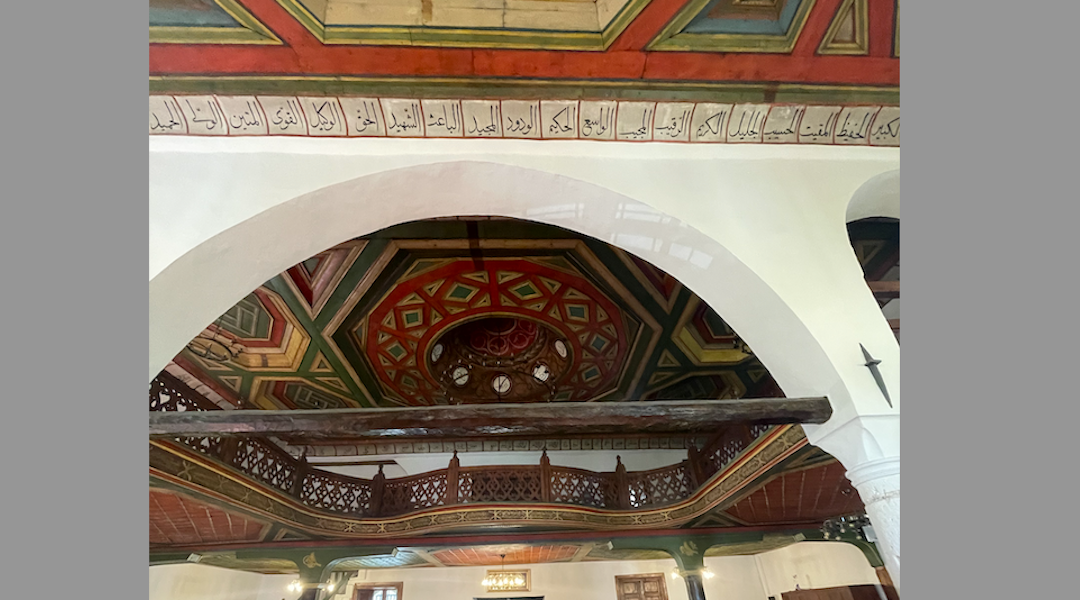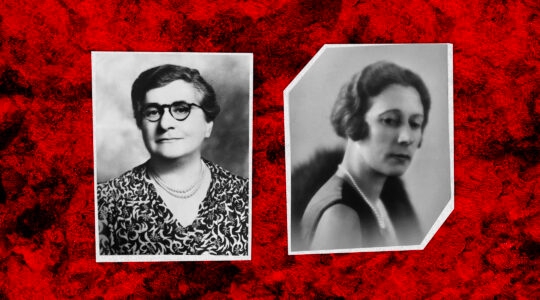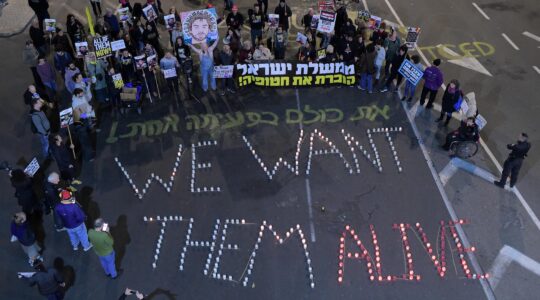BERAT, Albania (JTA) — Stone paths wind through the Ottoman-style houses built into the hillside of Berat, Albania. They lead to an imposing 13th-century castle at the peak — the top priority for most visitors to this 60,000-person town 90 minutes south of the capital, Tirana. I had other plans.
Albanians take pride in their ancient code of “besa,” which translates to “keep the promise” and leads them to prioritize guests and religion in their homes. For Albanian Jews or those who fled there from elsewhere in the Balkan Peninsula as German forces advanced during World War II, it promised safe harbor with Albanian families and even throughout entire towns. Albania is the only country in Europe whose Jewish population grew during the war.
Berat’s Solomoni Museum explains this history and that of earlier Jews in the area. At least, so I hear: Under the stone arches off the plaza, I found only locked doors.
Some people collect souvenir spoons or Starbucks city mugs when they travel, others collect memories. I collect fragments of Jewish identity. Planning this trip to Albania with friends, I insisted on a stop in Berat to see the small museum and wasn’t about to give up.
“I’ll call her,” offered the woman behind the desk at the Ethnographic Museum across the street. “Her” referred to the caretaker, the widow of the Orthodox Christian professor who started the museum — Albania’s only one dedicated to Jewish history — as a passion project funded by his pension. After Simon Vrusho’s death in 2019, the museum closed until a French-Albanian businessman heard the story and donated funds for it to reopen in a larger, permanent location.
But the call ended with bad news: The caretaker was sick, and the museum would remain closed. I grimaced. Seeing my reaction, the Ethnographic Museum docent did what all Albanians do — anything she could to make me feel better, to make sure I enjoyed my stay in her town. In this moment, that meant explaining everything she knew about Jews in Albania.

A view of the exterior of the Solomoni Museum, the country’s only museum about its Jewish history. (Naomi Tomky)
Jews first arrived in the country as Roman captives, almost 2,000 years ago. But the first major wave, especially to Berat, came from Spanish Jews fleeing the Inquisition. The Ottoman Empire, which ruled the area at the time, offered nominal religious freedom.
This month, the country’s prime minister announced plans to open a museum in Tirana dedicated to the stories of Albanian citizens who sheltered Jews during the Holocaust, when the country was occupied by both fascist Italy and later Nazi Germany. Yad Vashem, Israel’s Holocaust remembrance authority, has recognized at least 75 Albanians as Righteous Among the Nations for saving Jews.
“You can see the street where the Jews lived,” the docent noted. I perked up and jotted down her directions.
Six blocks away, I found a simple black plaque with white lettering, barely the size of my forearm and posted high on a white brick wall. It read, “Rruga Hebrentje.” I stared at it. Two millennia of Jewish history in the country, and one closed museum forced me to take heart in a little sign saying “Jew Street.”

A sign in Berat, Albania, reads Rruga Hebrentje, or Jew Street. (Naomi Tomky)
Jews have company in this razing of history: The brutal post-World War II communist regime of dictator Enver Hoxha shuttered all religious institutions in 1967, declaring Albania the world’s first atheist state. His forces destroyed more than 2,000 mosques, churches and other sacred buildings, arresting priests, clerics and imams, many of whom disappeared forever into labor camps and hidden graves. “Religion is the opium of the people,” Hoxha wrote, quoting Karl Marx.
It felt selfish to pout about the lack of Jewish history when so much religion, so many people and huge swaths of Albanian culture had been so recently and violently erased. I joined my friends to explore Berat’s exceptions to the wanton destruction, starting at the Sultan’s Mosque, which dates to the 15th century and boasts an intricately carved wooden ceiling. We expected to admire just the outside, since our guidebook said the doors opened only around Friday prayer.
But as we stared at the somewhat ordinary façade, a friendly gentleman chatted us up. He spoke Albanian, Greek and a bit of Italian, the last of which proved useful at matching up to our Spanish and French. He told us a little about the mosque and the casual styles of observance by most Albanian Muslims, but we only realized he worked there when he invited us inside, retrieving a key when we responded with excitement.
We marveled at the green, red and gold ceiling, illuminated by a round chandelier. He asked if we wanted to climb up the minaret, warning us about the ascent. Narrower than the width of my hips, the tightly coiled spiral of 94 stairs featured a layer of dust and cobwebs that stuck to our bare feet. But at the top, swallowing my fear of heights, confined spaces and bugs, I reaped the reward: a 360-degree view of the “thousand windows” that give the town its nickname, flanking both banks of the Osumi River, and the double eagle of Albania’s red flag flying proudly above it all from the castle.

A view of the ceiling inside the Sultan’s Mosque in Berat. (Naomi Tomky)
Back on the ground, we thanked the man profusely and dropped donations in the box outside the mosque door as we prepared to say goodbye. Instead, he led us across the square to another building – the Halveti Tekke, or Teqe. Light flowed through the high stained-glass windows onto the walls of the 700-year-old gathering place belonging to the mystic order of Sufi Muslims called Bektashi. Chains hung from the ornate gold-leaf-decorated ceiling over a space where, according to our new friend, the bektashi, or dervishes, used to perform their whirling rituals.
“You want to go up?” he asked my friend’s eight-year-old daughter. She nodded excitedly, and he tossed her a ring of keys, pointing the way to the balcony. As she climbed the stairs, I noticed a pair of six-pointed stars framing the main doorway, a reminder of my original mission, even if they were likely not Stars of David.
But if I felt sad about missing out on the Jewish museum, I was heartened by what I did receive: a first-hand lesson on Albania’s life-saving culture of hospitality.
JTA has documented Jewish history in real-time for over a century. Keep our journalism strong by joining us in supporting independent, award-winning reporting.







